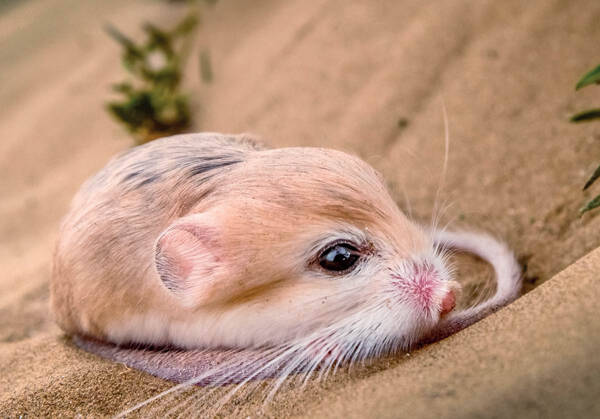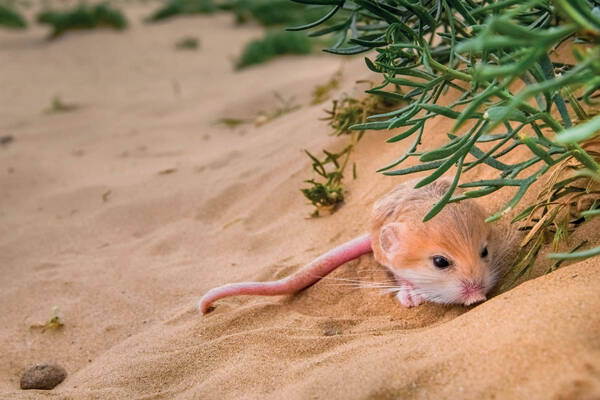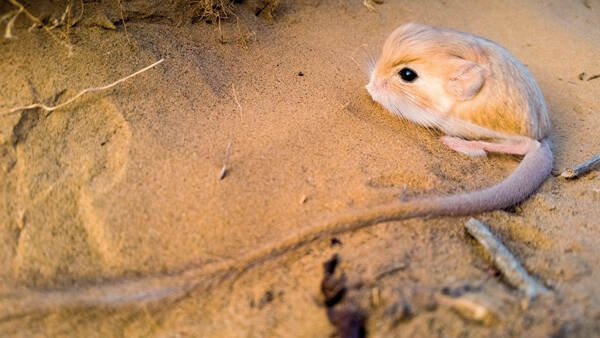Salpingotus kozlovi
IUCN
LCBasic Information
Scientific classification
- name:Salpingotus kozlovi
- Scientific Name:Salpingotus kozlovi,
- Outline:Rodents
- Family:Rodentia Jerboa T.Jerboa
Vital signs
- length:50-56mm
- Weight:10g
- lifetime:
Feature
It has a small body and a slender tail that is about twice its body length. The tail hair is sparse, the tail scales are visible, and the hair at the end of the tail is particularly long.
Distribution and Habitat
In China, it is distributed in northern Xinjiang, western Inner Mongolia, Shaanxi, Gansu, and northern Ningxia. Abroad, it is distributed in Mongolia.
Appearance
Body length 50-56mm. The tail length is about 2.5 times the body length, averaging 120mm. Ear height generally does not exceed 12mm. Weight is about 10g. From the base of the tail, sparse white long hairs are arranged regularly and extend out to both sides, and the rear end 1/4 forms a brown pencil-shaped hair bundle. The tail base 1/4 is significantly enlarged in autumn. In summer, the coat color is grey-brown, with a pure white belly. In autumn, the coat color gradually becomes lighter, until the whole body is gray-white, and the hair bundles on the tail also turn gray-brown.
Details
The three-toed cardiocraniinae belongs to the subfamily Cardiocraniinae. Although this species is widely distributed, its number is rare. There are very few specimens in the country. There is no dispute in classification, and there are 2 subspecies. There is very little information on ecology, and research is very weak.

The three-toed heart-cranial jerboa is a species endemic to the central deserts of Asia. It has a narrow distribution range and inhabits red willows with very low coverage, salt claws, flowing and semi-flowing sand dunes, and wind channels with quicksand or Gobi and sand dunes. There are many of them. The tunnel is short and straight, with a simple structure. In 1982, a cave was occasionally seen in Mingsha Mountain, Dunhuang. It was about 30-40 cm long and 3-4 cm in diameter. It began to reproduce at the end of April, and pregnant mice were found in May, with 3-4 pups per litter. Active at dusk and at night, hibernates. Feeds on plant stems, leaves and seeds. Also preys on coleoptera insects. Natural enemies are mustelids. Due to the relatively small population of each species, it is relatively difficult to capture it in the wild.

Listed in the 2013 Red List of Endangered Species of the World Conservation Union (IUCN) ver3.1 - Vulnerable (VU).
Listed in Appendix I of the Convention on International Trade in Endangered Species of Wild Animals (CITES).
Listed in the "List of Terrestrial Wildlife with Important Economic and Scientific Research Value under State Protection" issued by the State Forestry Administration of China on August 1, 2000.









